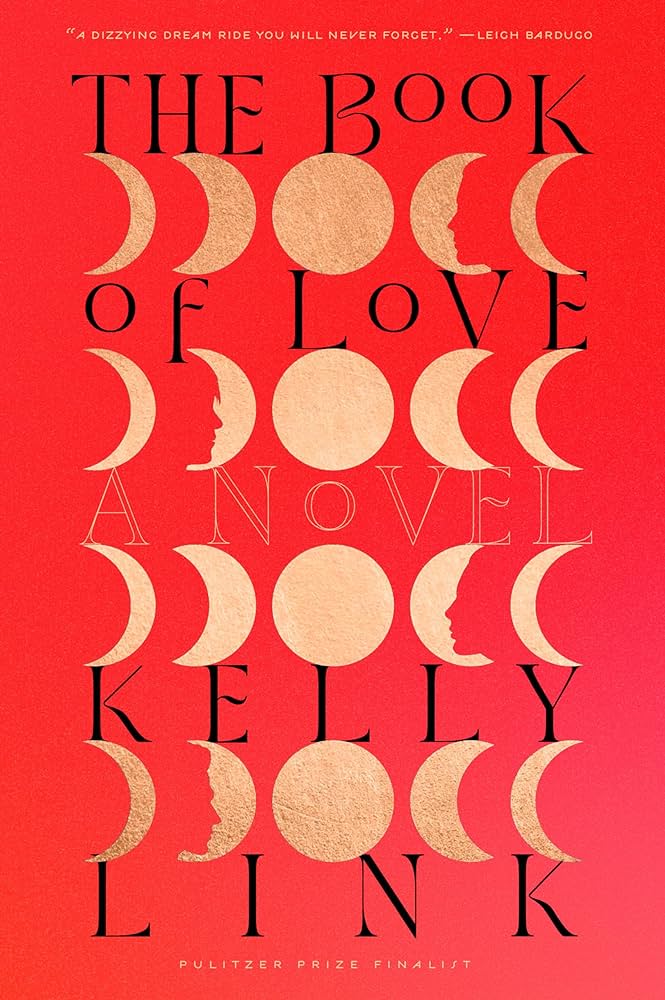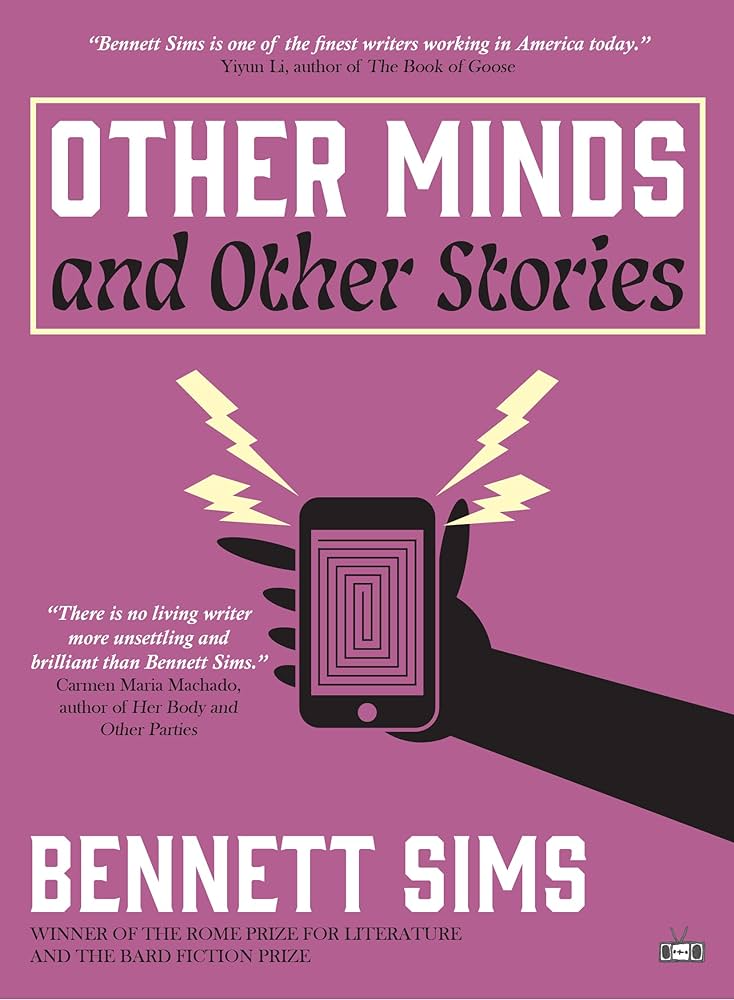 Timothy Schaffert is among the legions of authors who aren’t, I think, nearly as well-known as they should be. A native of Nebraska, he writes novels of great tenderness and intelligence, set in his home state. Three of these books comprise a sort of loose Midwestern trilogy; they’re unconnected, except when the occasional character from a previous book pops up for a cameo appearance, but we’re always in Nebraska, always in and around the “little nothing town of Bonnevilla (pop. 2,900).” (A fourth novel, Devils in the Sugar Shop, is set in Omaha.)
Timothy Schaffert is among the legions of authors who aren’t, I think, nearly as well-known as they should be. A native of Nebraska, he writes novels of great tenderness and intelligence, set in his home state. Three of these books comprise a sort of loose Midwestern trilogy; they’re unconnected, except when the occasional character from a previous book pops up for a cameo appearance, but we’re always in Nebraska, always in and around the “little nothing town of Bonnevilla (pop. 2,900).” (A fourth novel, Devils in the Sugar Shop, is set in Omaha.)
We’re in and around Bonnevilla but it seems to me that we could be almost anywhere, in any place far off the beaten track. Bonnevilla is so sketchily rendered that it’s easy to project the places you’ve known over it; it’s hard to imagine two landscapes less alike than rural Nebraska and coastal British Columbia, but the melancholy and the rhythms of Schaffert’s locale remind me oddly of the old mining town of Cumberland, an out-of-the-way place in the forests of Vancouver Island that’s always seemed to me to be filled with ghosts. Schaffert’s work is partly driven by the peculiar tension that arises between, on the one hand, the sharply rendered, messily three-dimensional characters that populate his novels, and on the other, the dreamlike landscape they move through.
Part of what appeals to me so deeply about this work, I think, is that Schaffert understands that small places, even small places in the deep heartland, are not innocent. (Small places, in my experience, are as dark and as fraught as any seething metropolis, and often much harder to get out of.) Schaffert’s dream landscapes are shot through with death. Violence rarely intrudes in the present, but it’s never very far back in the past. His work is beautiful and unsettling.
1.
 The Phantom Limbs of the Rollow Sisters: Schaffert’s debut. Lily and Mabel Rollow’s father committed suicide when they were children, and their mother abandoned them with a careless grandmother soon afterward. Now eighteen and twenty-one, they live in a junk shop far from anywhere, a gray house “in the middle of eighty acres of farm land long left fallow, a few miles from the little nothing town of Bonnevilla.” It was their grandmother’s, but she left them too.
The Phantom Limbs of the Rollow Sisters: Schaffert’s debut. Lily and Mabel Rollow’s father committed suicide when they were children, and their mother abandoned them with a careless grandmother soon afterward. Now eighteen and twenty-one, they live in a junk shop far from anywhere, a gray house “in the middle of eighty acres of farm land long left fallow, a few miles from the little nothing town of Bonnevilla.” It was their grandmother’s, but she left them too.
The book opens with a touch of death. “In her secondhand shop,” the first chapter begins,
Mabel stretched out on the fainting sofa, feeling tipsy from the summer’s heat, not knowing, for a moment, if it was June, July, or August. She shook up a leaking snow globe, the white flakes settling in the laps of lovers on a gondola. Mabel had read in a book on antiques that the snow in snow globes was once made of sawed-up bone.
This is Edward Gorey territory—abandoned girl, fainting sofa, bone—and of the three books, this one comes closest to full-on gothic. The dead are never far away. Lily’s fragile and childish boyfriend, Jordan, once slit his wrist in a bathtub—not very deeply, and only a few minutes before his mother was due home—and likes to show off his scar. He drives a car that belonged to a murderer.
But Jordan’s only playing at being close to death; Mabel and Lily dwell in a much more sinister territory. They like to tell each other that, despite everything, they’ve turned out all right; but much of the book’s tension, particularly in the third act, is derived from the extent to which they haven’t.
2.
 The Singing and Dancing Daughters of God: The overwhelming sense is that we’ve stepped into the story just shortly after the good times ended. There were two couples once, close friends: Ozzie and Jenny, Tuesday and Hud. But now Jenny has died and Ozzie is adrift in her absence, Tuesday and Hud have divorced, and all of them are estranged from respective teenage children.
The Singing and Dancing Daughters of God: The overwhelming sense is that we’ve stepped into the story just shortly after the good times ended. There were two couples once, close friends: Ozzie and Jenny, Tuesday and Hud. But now Jenny has died and Ozzie is adrift in her absence, Tuesday and Hud have divorced, and all of them are estranged from respective teenage children.
Tuesday and Hud’s son Gatling has run off to tour with The Daughters of God, a seedy Gospel punk band of growing renown. They do go after him, but this plot point feels slightly extraneous; what matters, in this case, are the people Gatling left behind, especially Gatling’s father.
Hud is a singer and pianist in a hotel lounge, a country western musician who plays his guitar at the market, an unhappily divorced father of two, and an unsettling inebriated school bus driver. “To get through the afternoons that wound into early evenings, driving a school bus along long country roads and driveways, Hud kept slightly drunk.” It’s only early September on the day the book opens, but half the children on his bus are dressed up in their Halloween costumes; his bus carries a pirate, a little nun with a newspaper hat, a boy in an Indian headdress. There are two small boys dressed up in suits, with grey makeup on their faces; they’re dressed, they tell Hud, as the murdered Schrock brothers.
On this particular long afternoon, as Hud ferries his charges down country roads, a local man named Robbie Schrock is scheduled for execution. The previous Halloween, he dropped rat-poisoned candy apples into his sons’ trick-or-treat bags. Nearly a year later, the town’s children have dressed in their costumes to celebrate the man’s impending death.
In an odd way, Hud doesn’t find Schrock’s crime inexplicable. His ex-wife Tuesday views him—not unreasonably—as a bit of a drunk, and has occasionally sought to keep him from their eight-year-old daughter. He thinks of how Robbie Schrock, “his babies taken away, probably in an ugly divorce, probably left with only an occasional weekend or an occasional holiday with his children, wanted the whole world to know what loss can really do to a person. Hud could sympathize.”
He would never hurt Nina, but he does fantasize sometimes about stealing her away, about driving and driving to some other quiet place, changing their names and slipping into a life that doesn’t involve Tuesday. He strikes me as a man coming to grips with the inadequacy of this often-disappointing life; he moves through his days as best he can and struggles to reconcile himself to the world’s shortcomings. The book is no less haunted than The Phantom Limbs of the Rollow Sisters is, but the ghosts are of a different nature.
Still, Tuesday is as fully realized and complex a character as Hud, and her actions are never inexplicable. The marriage is over but they haven’t entirely fallen out of love, or at least not consistently out of love, and in the delicately rendered quasi-affair between them Schaffert lays claim to a post-divorce landscape mapped out by John Updike. Hud and Tuesday’s ambivalence reminds me of nothing so much as the final scene of Updike’s short story “Here Come The Maples”, wherein Joan and Richard Maple reach the end of their marriage and, at the end of the divorce proceedings, find themselves somewhat at a loss in a courtroom:
Obsolete at their own ceremony, Joan and Richard stepped back from the bench in unison and stood side by side, uncertain of how to turn, until Richard at last remembered what to do; he kissed her.
3.
 The Coffins of Little Hope: This was the first of Schaffert’s books that I read. The word “exquisite” gets thrown around too easily when a book’s unflashy, carefully wrought, and beautifully written, but well, this one really is. The narrator is Essie Myles, the town’s obituary writer. She is in her eighties.
The Coffins of Little Hope: This was the first of Schaffert’s books that I read. The word “exquisite” gets thrown around too easily when a book’s unflashy, carefully wrought, and beautifully written, but well, this one really is. The narrator is Essie Myles, the town’s obituary writer. She is in her eighties.
The town is faded now. Perhaps it always was, but here for the first time we’re presented with a place that might not be expected to exist indefinitely.
Essie has outlived her only child, but her grandchildren live in town and her family is close. Her two grandchildren are Doc, who publishes the local paper, and Ivy, who took off for Paris some years ago and left her daughter, Tiff, in Doc’s care. At the book’s opening Ivy has recently returned and is struggling to find her role in the family. A chronicle of fraught domesticity is played out against the backdrop of a peculiar publishing drama: in an effort to avoid leaked plot points and spoiled endings, the publisher of the outlandishly popular Miranda and Desiree books has decided to have the eleventh book in the series—The Coffins of Little Hope—printed in the most obscure small towns they can find. They’ve chosen Doc’s printing press. The work of producing the enormous print run is carried out in secret. Guards check the employees for smuggled pages when they leave at the end of the day.
It requires a leap of imagination, but then, so did the Harry Potter phenomenon. Before Harry Potter it was hard to imagine the spectacle of children and teenagers lining up at midnight to buy a book, but it happened.
The dying town is given new life when a woman named Daisy whom no one knows very well, an employee at the press and a resident of a falling-down farmhouse on the outskirts of town, claims that her eleven-year-old daughter Lenore has gone missing. The case attracts national attention, in the way that kidnapping cases very occasionally do. Doc’s local paper suddenly gains readers all over the country, as he writes story after story about the vanished girl. A strange collection of misfits and hangers-on begin to congregate in Daisy’s ramshackle farmhouse; Tiff dubs them the Lenorans. Daisy begins to give disjointed guest sermons before local congregations.
But as the weeks of the investigation drag on, the evidence of Lenore’s existence seems curiously slight. When she disappeared, she left nothing behind her. There are no sneakers on the doormat, no pictures on the wall, no blonde hair caught in a hairbrush. Only one photograph exists, a Polaroid so blurry that it could be almost any blonde-haired girl. She was born at home, her mother insists, and thus has no birth certificate. No one knew her. Is Lenore still alive? Was she ever?
The book is haunted by the question of whether the missing child ever actually existed. At last Essie visits Daisy on her farm, just as she visits everyone in town who’s recently lost someone. She’s here ostensibly to write Lenore’s obituary, but she doesn’t write down anything Daisy says. She sits, listening in silence, as Daisy talks.
Finally a tear rolled down [Daisy’s] cheek and over the pout of her lower lip. I was unmoved. Maybe I didn’t want to help her at all. Maybe I just wanted to hear a confession, and I wanted to be the one to tell the truth to others. … None of this was an effort toward closure. It seemed just another beginning in a story that was all beginnings. And that was probably why my little town couldn’t get enough of it. We were so tired of endings.
The novel is a beautifully rendered chronicle, as are all three of these books, of forgotten places and damaged lives.











